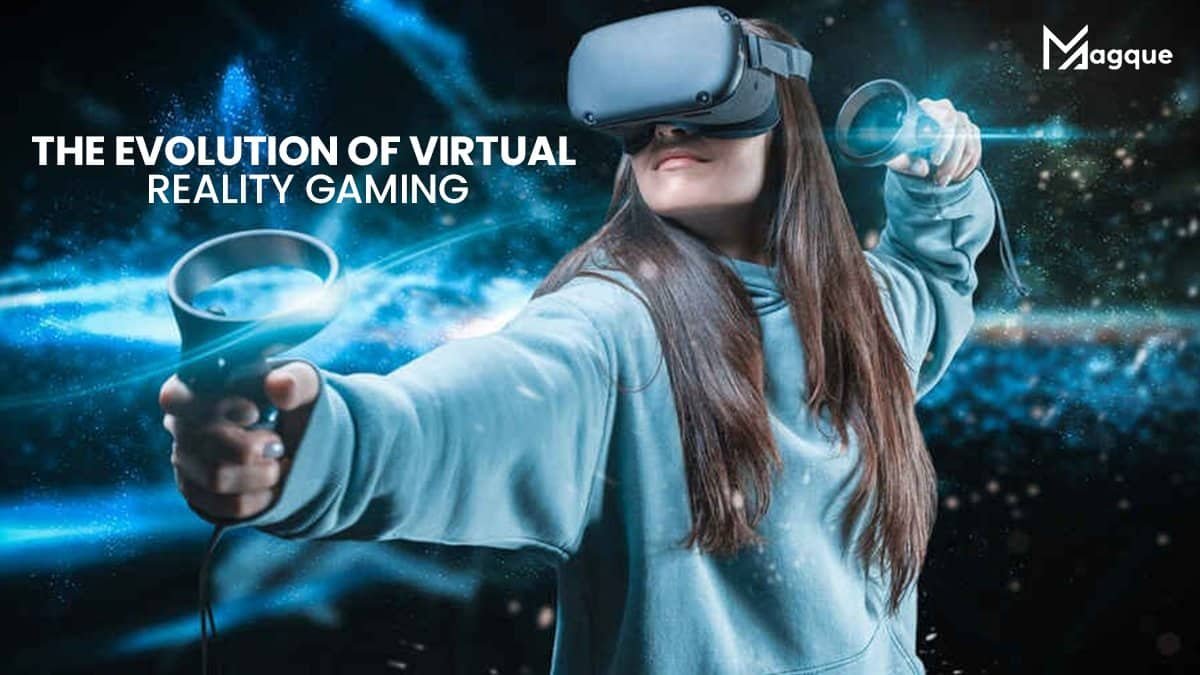Virtual Reality (VR) gaming is no longer a futuristic dream—it’s a dynamic and rapidly evolving reality if you’ve ever wondered how we got from the clunky headsets of the past to the immersive experiences of today, strap in as we take you on a journey through the mesmerizing evolution of VR gaming.
The Birth of a Virtual Dream
The roots of VR gaming can be traced back to the late 20th century when visionaries like Ivan Sutherland and Jaron Lanier first conceived the idea. These pioneers laid the groundwork for what would become a revolution in gaming.
The Clunky Beginnings
In the early 1990s, VR gaming was more science fiction than reality. The headsets were heavy, the graphics needed to be more extensive, and the experiences were far from immersive. Gamers were left wondering if this technology would ever take off.
A New Millennium, A New Beginning
The turn of the century brought renewed hope for VR gaming. Advances in hardware and software led to the emergence of VR arcades and experimental games. Although not yet mainstream, VR was gaining traction.
The Rise of Oculus
The turning point came in 2012 when Oculus Rift launched its Kickstarter campaign. This brought VR back into the spotlight and ignited the interest of both developers and gamers. Oculus Rift’s success paved the way for a new era of VR.
Today’s VR Renaissance
Fast forward to today, and VR gaming has undergone a remarkable transformation. The once clunky headsets have evolved into sleek, lightweight devices with stunningly realistic graphics. The VR gaming industry thrives with many titles, from action-packed shooters to serene exploration experiences.
VR Beyond Gaming
VR has transcended gaming, finding applications in education, healthcare, and even therapy. The immersive nature of VR allows for groundbreaking experiences, from virtual classroom tours to therapeutic sessions in calming environments.
The Future of VR Gaming
So, what’s next for VR gaming? The future promises even more excitement. With advancements in haptic feedback technology, augmented reality (AR) integration, and the potential for full-body immersion, VR gaming is poised for unparalleled growth.
Imagine a world where you can physically feel the raindrops in a game or interact with virtual objects using your own hands. The possibilities are endless, and the evolution of VR gaming shows no signs of slowing down.
In conclusion, the journey of virtual reality gaming from its humble beginnings to its current state of innovation and limitless potential is nothing short of remarkable. We can only anticipate more awe-inspiring developments in this immersive realm as technology advances.
The evolution of VR gaming is akin to a rollercoaster ride through time, and we’re all strapped in for an exhilarating journey into the unknown. Whether you’re a hardcore gamer or simply curious about the future, VR gaming is a thrilling frontier that promises to redefine entertainment and experiences as we know them.
And be sure to explore Magque, your go-to source for the latest and most intriguing updates in informative tips & reviews!
FAQs
1. What is virtual reality gaming, and how did it start evolving?
Virtual reality gaming is a technology that immerses players in a computer-generated 3D environment where they can interact with the virtual world. Its evolution began in the late 20th century with early experiments and visionary concepts by pioneers like Ivan Sutherland and Jaron Lanier.
2. How has virtual reality gaming evolved over the years?
Virtual reality gaming has evolved from its clunky and rudimentary beginnings in the 1990s to the sleek, immersive experiences we have today. Advancements in hardware and software and the emergence of innovative companies like Oculus have played a pivotal role in its evolution.
3. What are some notable milestones in the evolution of virtual reality gaming?
Some key milestones include the development of the Oculus Rift headset in 2012, which rekindled interest in VR, and the current era of realistic graphics, lightweight headsets, and a thriving VR gaming industry. VR’s expansion beyond gaming into education and healthcare is also noteworthy.
4. What can we expect from the future of virtual reality gaming?
The future of VR gaming is promising, with advancements in haptic feedback, augmented reality integration, and full-body immersion technologies. This could lead to more realistic and interactive experiences, blurring the line between the virtual and real worlds.
5. How has virtual reality gaming impacted industries beyond entertainment?
Virtual reality gaming has transcended entertainment, finding applications in education, healthcare, therapy, and more. It enables virtual classroom experiences, medical simulations, and therapeutic interventions in immersive environments, making it a versatile and transformative technology.
Read Also This:- Virtual Reality and Gaming: The Latest Trends and Products



















